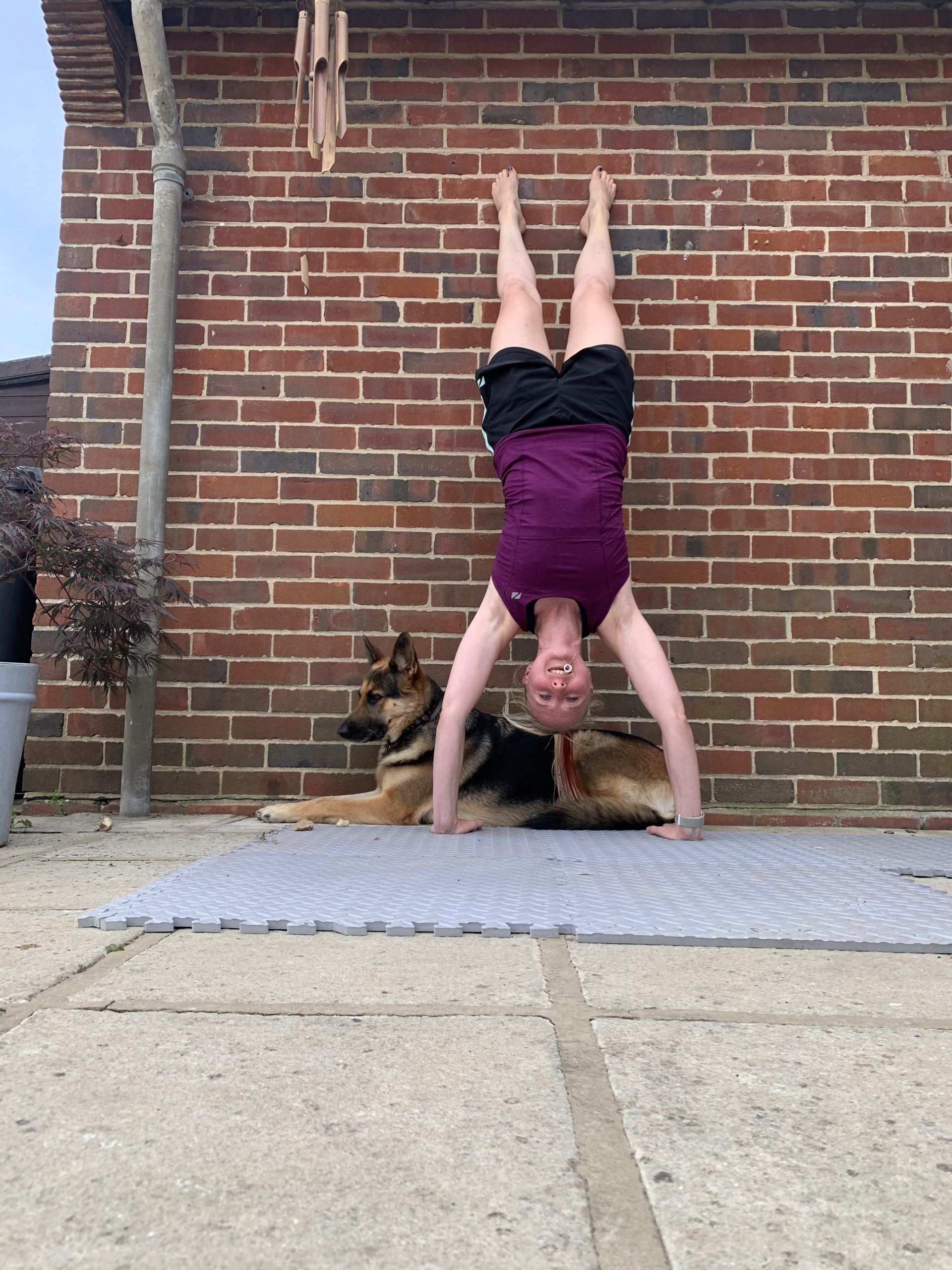When you hear the word ‘inversion’ do you think headstand or handstand? Yes these are inversions but going upside down doesn’t have to mean balancing on your head or hands, a simple downward facing dog is an inversion and you feel most of the benefits of a more trickier inversion just doing this.
Reversing gravity has a funny way of making people grin. Hanging or being upside down tends to feel a bit funny, the blood rushes to your head and you see life from a different perspective.

Inversion has a few health and wellbeing benefits too like:
- Brain boost – mood improving
Inverting uses gravity to increase blood circulation to the brain, heart, and lungs. The weight of your abdominal organs pressing on the diaphragm also promotes deeper breathing, which increases the amount of carbon dioxide leaving the body on the exhale.
The rich supply of blood circulating in the brain increases available oxygen, which invites mental clarity. The increase in oxygen also improves concentration and memory.
- Strengthens Core & Shoulder Muscles
Getting upside down requires you to engage your core and shoulder muscles to hold your body steady. Engaging your core in an isometric hold during an inversion builds strength in your core, back and shoulders.
- Focused time and attention
Balancing upside down takes a certain level of focus, so every time you practice headstand or inversion, you’re also applying your ability to clear mental clutter and focus on the task in hand. Improving your focus on the mat by staying in a challenging pose, can help you focus off the mat as well.
- Inversions help your body to function better
Inversions positively influence the cardiovascular, lymphatic, nervous, and endocrine systems.
When practising use props.
One fantastic thing about practicing inversions at home is that there are lots of props that can help you to get upside down.
Use a wall: If you’re working up to a handstand or headstand, use a wall to support your legs and/or feet to provide a stopping point and help you feel more stable and supported.
Set up a soft-landing zone: When you come out of an inversion, it’s nice to have a soft space to land – couches and beds are perfect!
Ask someone to spot you: Whether you’re an inversion expert, beginner, or somewhere in between, it’s helpful to have someone spot you to make sure you are practising safely.
No matter what, listen to your body! It’s important to take personal health into consideration before any kind of inversion work. When in doubt, talk to your doctor to make sure inversions are safe for you.
Favorite



